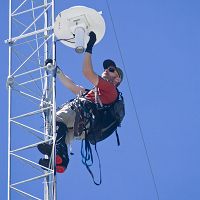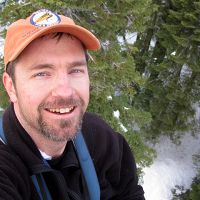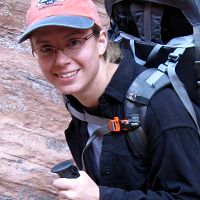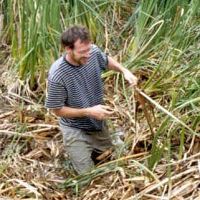Meadows et al., 2011
Comparing methods for quantifying soil moisture in the southern Sierra Nevada, California.
Meadows, M.W., Hartsough, P.C., Kerkez, B., Bales, R.C., Kelly, A.E., Hopmans, J.W., Hedge, C., Goulden, M., Glaser, S.D. (2011)
Fall meeting, American Geophysical Union, December 2011. Abstract H41D-1054.
-
Sierra, STAFF
-
Sierra, INVESTIGATOR
-
Sierra, COLLABORATOR
-
Sierra, INVESTIGATOR
-
Sierra, GRAD STUDENT
-
Sierra, COLLABORATOR
-
Sierra, UNDERGRAD
-
Sierra, INVESTIGATOR
-
Sierra, INVESTIGATOR
Abstract
Soil moisture was monitored at two elevations (1,200 and 2,000m) in the southern Sierra Nevada using cosmic-ray, time domain reflectometry (TDR), dielectric, and gravimetric sampling techniques. These techniques are compared to develop a better understanding shallow (0-50 cm) soil moisture distribution, and to determine the feasibility of decoupling vegetation moisture storage from soil moisture storage within the cosmic-ray signal. Multiple embedded sensors (TDR and dielectric) were deployed across varying soil depths, aspects, elevations, and canopy covers to capture spatial and temporal variations of soil volumetric water content within the spatial range (~34 ha) of COsmic-ray Soil Moisture Observing Systems (COSMOS). Soil samples were collected within the COSMOS footprint for calibration and comparison during the COSMOS installation, June 2011. Throughout a spring-fall drying season, area average volumetric water content observed by COSMOS were compared to real-time, in situ observations of soil moisture using TDR and dielectric sensors, and with measurements of soil moisture taken periodically during surveys within the COSMOS footprint. Surveys of soil moisture in the upper 40 cm of soil were made along transects around the COSMOS with handheld TDR and gravimetric sampling techniques. Results show that the COSMOS and the embedded sensor networks effectively observed trends of snow disappearance and soil drainage throughout the summer and fall, although the COSMOS system may be influenced by surface water from streams, springs and meadows as well as water storage in vegetation. The COSMOS does well tracking diurnal and seasonal trends in the near surface soil profile, however misses some of the finer scale trends observed within the embedded sensor network and surveys. This research site is part of the NSF-supported Southern Sierra Critical Zone Observatory, which is co-located within the Kings River Experimental Watersheds, a U.S. Forest Service integrated watershed research site in the Southern Sierra Nevada.
Citation
Meadows, M.W., Hartsough, P.C., Kerkez, B., Bales, R.C., Kelly, A.E., Hopmans, J.W., Hedge, C., Goulden, M., Glaser, S.D. (2011): Comparing methods for quantifying soil moisture in the southern Sierra Nevada, California. Fall meeting, American Geophysical Union, December 2011. Abstract H41D-1054..
Explore Further








